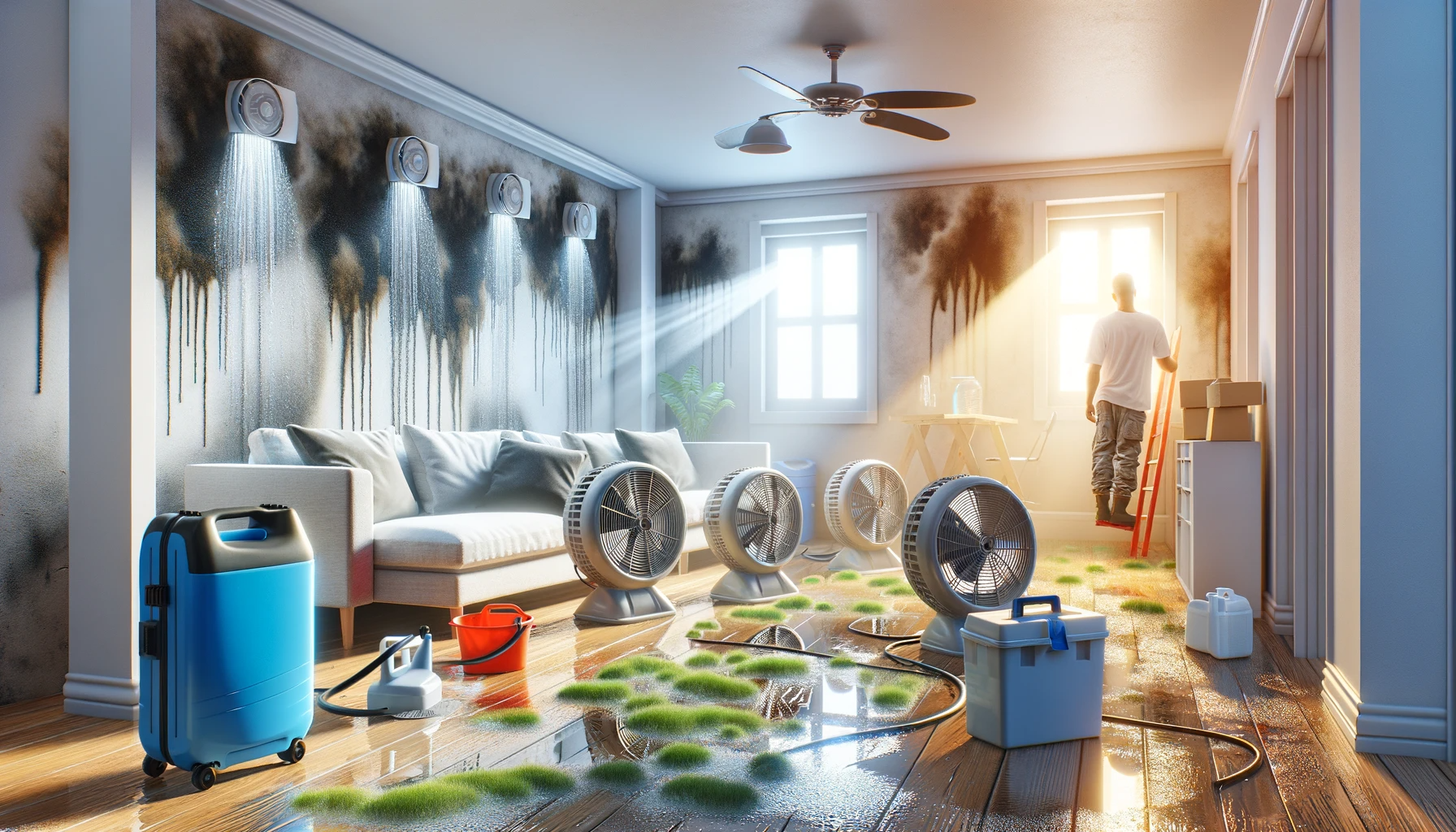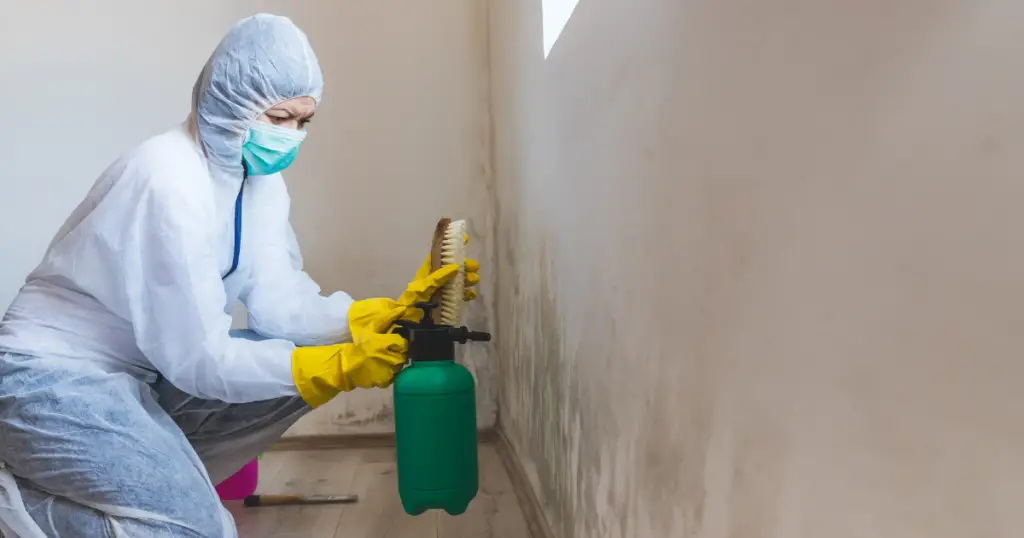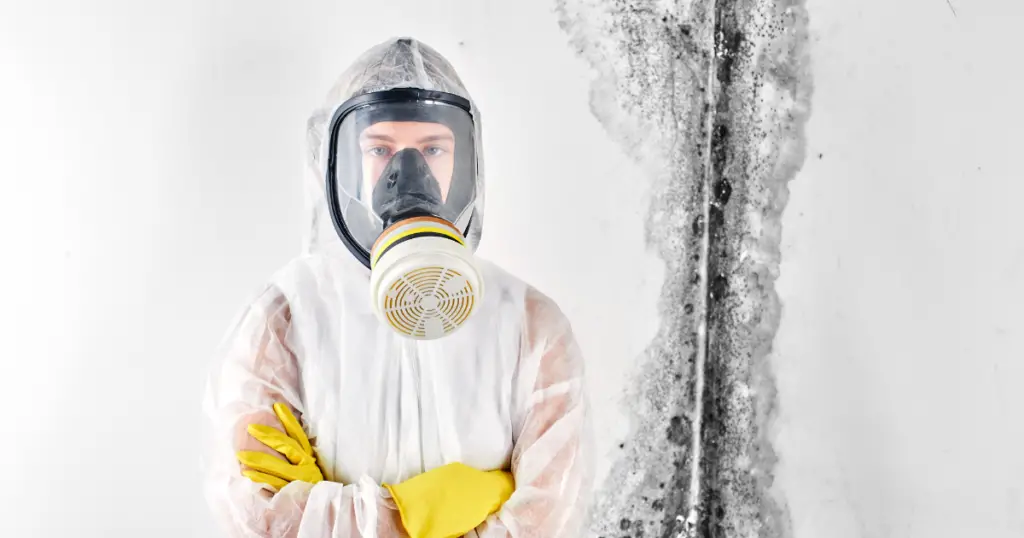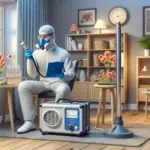What To Spray To Prevent Mold After Water Damage?
Mold is an unpleasant reality for many homeowners. It can cause health issues (allergic reactions, asthma, rashes, etcetera), damage to buildings and other structures, and lead to extensive costs for remediation. However, some preventative measures can help stop mold from becoming a problem in the first place.
Are you looking for advice on what to do when mold grows in your house and how to maintain a mold-free environment in your environment? This article will uncover the most effective ways of preventing and treating mold growth.
Mold Growth
Mold grows in damp, dark, and humid places. It thrives on organic materials such as wood, paper, drywall, fabric, and cardboard. It needs moisture to survive and spread. Mold is not created by one particular factor, but instead, several components must be present to provide the necessary conditions for mold growth after water damage. These elements include moisture, nutrient sources, temperature, and time.
Mold growth can be a real problem for homeowners, often starting with small colonies of mold and quickly growing if not addressed. Excess moisture in the air paired with musty smells are usually the first signs that mold may be growing. Mold growth can occur due to water leaks or general water exposure on other surfaces such as walls, floors, and furniture. To prevent mold from becoming a bigger issue, it is important to pay attention to potential sources of excess moisture and act accordingly.
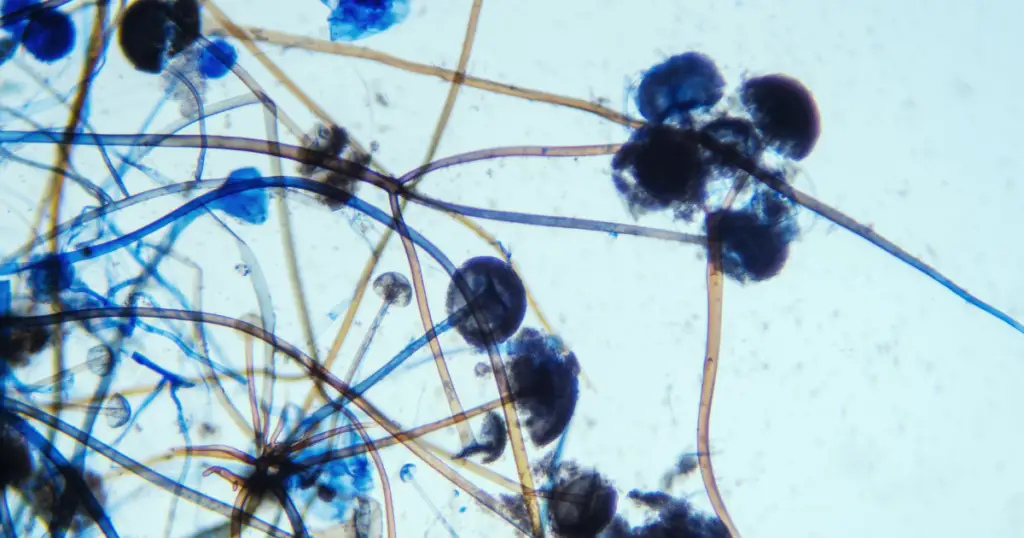
Mold Spores
Mold spores are minuscule, airborne fragments that drift through the air and can cause respiratory issues or allergies if breathed in. Not only this, but these minute particles activate and proliferate when exposed to moisture – making them incredibly troublesome everywhere.
Under favorable conditions, such as high humidity levels or standing water, spores can grow into colonies. Because spores can survive in a variety of environments, they have the potential to spread quickly throughout a home or building if not properly managed.
How to Prevent Mold Growth After Water Damage?
If you recently suffered significant water damage, it is important to act quickly to reduce the risk of mold growth.
Here are 8 Steps to Prevent Mold Growth in your home:
Safety First (PPE)
Make sure to protect yourself with proper PPE when dealing with a water-damaged material. Wear gloves and other protective gear when handling wet items or replacing drywall.
Stop the leak
Find and repair the source of the water leak to stop any further water damage.
Eliminate all standing water
Remove excess moisture and dry out wet surfaces as soon as possible by using towels or a wet/dry vacuum. Remove carpet padding and properly clean the affected area to prevent mold.
Dispose of all damaged materials
Throw away any porous items such as carpets, furniture, and wall insulation that have been affected by the water damage.
Use a dehumidifier and air purifier
Utilize these devices to reduce humidity levels in your home or building and get rid of any unpleasant odors caused by dampness or mold.
Disinfect and clean all surfaces
Use a disinfectant solution to clean walls, floors, and other hard surfaces to kill any existing spores before they can spread further.
Spray the Hard surfaces
Use a mold-inhibiting product to coat any exposed walls, floors, or other hard surfaces. This will help prevent the growth of spores in an area where water has been present.
Replace Damaged Items
Replace any damaged materials that cannot be salvaged due to excessive exposure to moisture or mold.
Mold Remediation
Contact a professional remediation service if you notice visible mold growth or persistent musty odors in your home or building despite taking all necessary steps for drying out the affected area completely during the drying process to avoid further damages caused by mold.
What to Spray on Mold to prevent it from growing?
There are a few products on the market that are designed to inhibit mold from growing. These include antimicrobial sprays and paint additives.
Antimicrobial sprays will kill existing spores and help prevent new ones from growing, while paint additives will add an extra layer of protection against its growth.
The following items can be used to make an effective mold-prevention solution:
- Vinegar: Vinegar has a strong odor which inhibits the growth of new mold in the area. For best results, mix one part vinegar with four parts water and pour into a spray bottle.
- Bleach: Bleach is an effective solution for killing existing mold in damp areas such as wet drywall or other surfaces with a musty smell. Be sure to wear the right gear when handling bleach and use one cup of bleach per gallon of water when making your solution.
- Baking Soda: Baking soda is another natural mold-preventing product. Simply mix one part baking soda with two parts water and spray on affected areas to kill existing spores and inhibit new ones from forming.
- Tea Tree Oil: Tea tree oil has antifungal properties that make it effective at killing mold and mildew. Mix two teaspoons of tea tree oil with two cups of water and spray on affected areas.
- Other Hardware Store Solutions: Check any local hardware stores for premixed solutions specifically designed for killing existing mold on surfaces such as walls and ceilings. Follow the instructions on the label carefully and always use products with less than one pint per 500 cubic feet to avoid further damage.
Once you have prepared your preferred solution, simply fill up a spray bottle and apply it directly onto any surfaces that appear to have mold or musty odors. Make sure to thoroughly cover all affected areas and wait until they are dry before proceeding any further.
Avoid DIY Chemical Mixes
Unless you’re an experienced chemist, it’s a bad idea to mix risky chemicals — particularly when it comes to cleaning products and detergents. Combining these substances could result in the formation of hazardous substances which may endanger your health as severely as they do that pesky mold!
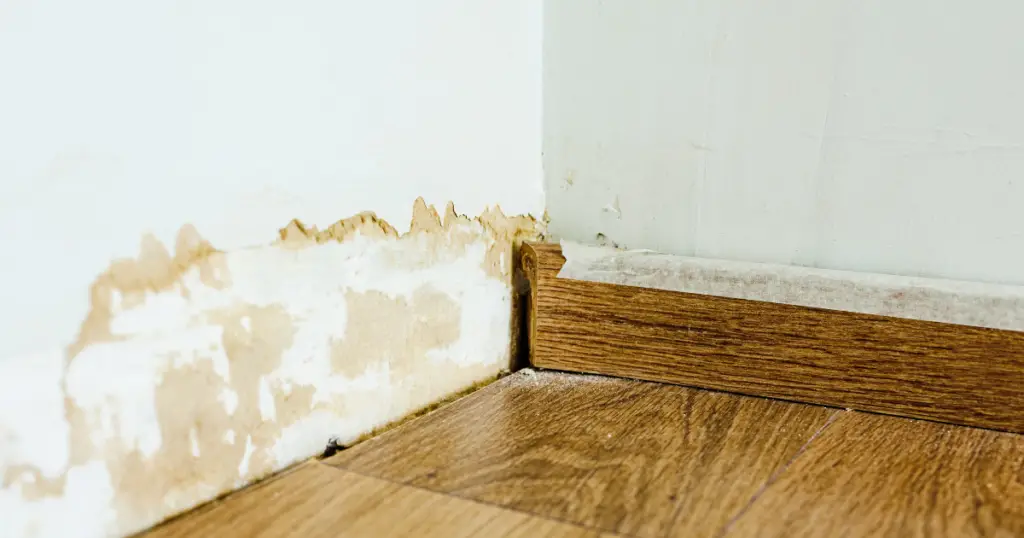
How and where to check for mold After Water Damage?
After water damage, it is important to check for mold to prevent further growth and potential health risks. Here are the places where you should look for mold:
- Water Damaged Areas: Look for any areas that have been exposed to moisture or standing water. This can include around windows, ceiling tiles, near washing machines, or behind refrigerators and other appliances.
- HVAC (Heating, ventilation, and air conditioning) System: Check the HVAC system for any signs of mold such as discolored panels or musty smells. This is especially important if the water damage was caused by a leaky air conditioner unit.
- Bathrooms: Inspect bathrooms carefully, paying close attention to areas behind showers and sinks where moisture accumulates more easily. Make sure to check walls, ceilings, and tiles as well.
- Basements: Basements tend to accumulate more moisture than other parts of a home due to their location below ground level. Take extra care when inspecting this area for any signs of mold that could have occurred due to higher humidity levels or stagnant water issues.
Does Water damage always cause mold?
No, water damage does not always lead to mold. However, this is a possibility if the affected area is not properly dried and excess humidity remains.
If conditions are right, mold can start growing within 24-48 hours of being exposed to water, moisture, organic matter, and temperature. The best way to prevent mold after water damage is to act quickly and dry out any affected areas as soon as possible
Call For a Professional Help
If you suspect that there may be a mold problem due to water damage, it is always best to call in a professional for help. Professional mold prevention services can inspect the affected area and advise on how to remediate any moisture issues and stop mold growth.
It is also important to have the proper equipment and knowledge needed for a successful mold prevention process, such as conducting mold testing to determine the type of mold present and if necessary, taking action to prevent any further spread.
[/et_pb_text][/et_pb_column][/et_pb_row][/et_pb_section]
